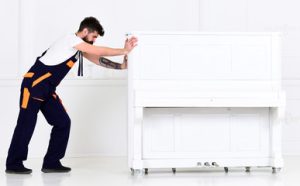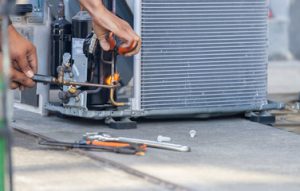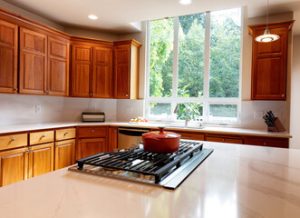Plumbing is the system of pipes and fixtures that manage water supply and waste removal in homes and businesses. It is vital to the health, safety, and comfort of occupants. It also plays a critical role in reducing environmental impact.

Your home’s plumbing starts with a water meter and main water line, then branches off into various outlets like sinks, toilets, showers, and water heaters. Each fixture is connected to a specific pipe with valves that regulate flow and pressure. Visit https://www.castlerockplumbingllc.com/ to learn more.
Plumbing is a complex system that brings clean water into buildings and removes wastewater. It includes pipes, fixtures, and other equipment that ensure safe, clean water for drinking, cooking, and bathing. It also includes drains that carry waste to sewage systems or treatment plants. Plumbing is essential to human life, but it can be dangerous when it malfunctions. Plumbers must be familiar with building codes and regulations, safety procedures, and the latest technology to keep up with industry standards.
The history of plumbing dates back thousands of years, when early civilizations struggled to manage water resources. Ancient Indians and Egyptians developed sophisticated irrigation systems, and the Romans built aqueducts to bring fresh water into cities and homes. These innovations made it possible for people to live in larger populations, but they also created new challenges for sanitation.
In the 17th century, British engineer John Harrington designed the first flush toilet. Although it was a revolutionary invention, it didn’t catch on. The lack of sewers in castles meant that waste emptied into moats, creating unpleasant odors and posing health risks.
The 19th century brought many advancements in plumbing. Boston pioneered indoor plumbing in 1833, and the White House had running water installed by 1900. The 19th century saw the rise of industrialization, which required large amounts of water for manufacturing and cooling. The demand for clean, safe water increased, and sewage systems had to be upgraded to handle the waste.
Modern plumbing is highly efficient. A well-maintained plumbing system can reduce a home’s energy costs by conserving water and reducing heating and cooling costs. However, it is important to note that even the most energy-efficient systems can encounter problems. For example, leaks and clogs can occur due to worn-out parts or improper installation.
Today, the Environmental Protection Agency sets standards for water quality and promotes sustainable practices. Plumbers must be aware of these regulations to protect public health and the environment. They must also understand the science behind water quality and how different materials affect it. In addition, they must be able to recognize the signs of a faulty plumbing system.
Job description
Plumbers install, repair, and maintain the pipes and fixtures that facilitate water, gas, and waste disposal in residential, commercial, and industrial settings. They also work on systems that connect to heating and cooling equipment, as well as fire sprinklers. Plumbers use a variety of tools and techniques to perform their job duties. They must be able to read blueprints and understand construction standards. They must also be able to solve complex problems and make critical decisions. Plumbers may also need to interact with customers.
Some plumbers specialize in specific areas of the field. For example, some work on kitchen and bathroom systems, while others focus on sewer lines and drains. Residential plumbers work on plumbing systems in homes, while commercial and industrial plumbers are responsible for larger public systems in buildings like hospitals, schools, and factories. These systems have more components than those in homes, and they often require connections to the main water line and sewage system.
Another specialty is working with gas systems. Some plumbers install and repair gas lines for cooking appliances, while others troubleshoot and repair issues with heating and cooling units. Some even perform gas leak detection and repair. Plumbers who work with gas must be knowledgeable about safety protocols and flammability concerns.
Plumbers typically begin their careers as apprentices, then advance to journeyman plumber status. They must pass a series of practical and written exams to earn their certifications, which allow them to work without supervision. They must also keep up to date on new technology and tools in their field. In addition to technical skills, plumbers need good interpersonal communication to effectively interact with their customers and other trade professionals.
A career as a plumber can be challenging and rewarding at the same time. It offers a steady source of income and long-term employment, as well as a sense of accomplishment. However, the work can be stressful and physically demanding, as plumbers must often climb and navigate around difficult-to-reach spaces in homes and businesses. In addition, they often have to work on evenings and weekends when emergencies occur.
Skills
A plumber needs a combination of skills to succeed in their work. These include technical plumbing skills, like pipe installation and repair, and knowledge of various plumbing systems. It’s also important to understand how to read blueprints and use tools. Additionally, plumbing requires a physical ability to bend, crouch, and climb. Plumbing apprentices typically learn about these and other skills through a formal apprenticeship. This experience teaches them how to handle the demands of the profession, and it can help them become more confident when working with customers.
One of the most important plumbing skills is customer service. A plumber who can’t talk to customers in a clear, understandable manner will be unable to solve their problems or earn repeat business. Plumbers often communicate with customers over the phone or in person, so they need to be able to listen and answer questions quickly. They must also be able to offer solutions that will meet the client’s needs.
Plumbers also need to have good hand-eye coordination. They use small tools in tight spaces, and they need to be able to hold onto them without dropping them. They must also have the ability to thread fittings and assemble pipes. These skills can be learned through formal training programs or through on-the-job training. Additionally, it’s a good idea to join a trade union to get support and benefits.
It’s also important for a plumber to have good physical fitness. They frequently find themselves working at heights, squeezing into cramped spaces, and dealing with extreme temperatures. They need to be in peak physical condition to avoid injuries and complete their work on time. They also need to be able to handle the pressure of dealing with irritated or upset customers.
The best way to become a plumber is through formal training and an apprenticeship. A number of trade schools and colleges offer certification programs in plumbing. In addition, many states require plumbers to be licensed. The requirements vary by state, but most require a high school diploma and some type of on-the-job training, such as a plumbing apprenticeship. The apprenticeship allows aspiring plumbers to learn the skills of the trade from seasoned professionals and earn money while they’re learning.
Education required
Unlike many other professions, plumbing does not require a four-year college degree. Instead, aspiring plumbers typically enter the field through trade schools or apprenticeships. These programs offer hands-on training and exposure to a wide range of skills that cannot be learned from books. Upon completion, these plumbers can then seek out licensing and certification.
The plumbing industry is regulated at both the state and federal level. It is important for aspiring plumbers to understand these regulations in order to be successful. This will allow them to avoid costly mistakes and ensure that their work meets the standards of the industry. In addition, it is crucial to understand the basic principles of plumbing, such as gravity and water seeking its own level.
A good education in plumbing will include a variety of subjects, including math and science. It will also cover the basics of the plumbing system, including how to read blueprints and other technical documents. It will also cover the proper use of tools, as well as the safety precautions associated with each tool. The program will also cover the different types of pipe, such as copper and PVC.
In addition, the program should include an introduction to the physics of plumbing. It will cover topics such as water pressure and the effects of temperature on pipes and fixtures. The program should also cover common plumbing problems, such as leaky faucets and clogged drains.
Plumbing is the system of pipes, fixtures, and appliances that provide potable water for drinking and washing, and remove wastewater and waste materials. It is vital for ensuring the health, safety, and comfort of building occupants. In addition, proper plumbing helps maintain the environment by reducing water and waste disposal needs.
While plumbing is a challenging and rewarding career, it is not for everyone. As a plumber, you will need to be physically strong and have excellent dexterity. In addition, you must be able to follow directions and work well in teams. Punctuality is also essential, as customers will appreciate a punctual plumber.
Most plumbing schools require a high school diploma or GED certificate as a minimum requirement for admission. They may also have other requirements, such as a physical exam or a medical clearance. The student must be in good health and should pass a drug test to participate in the program.



